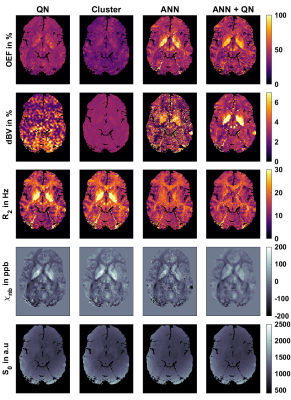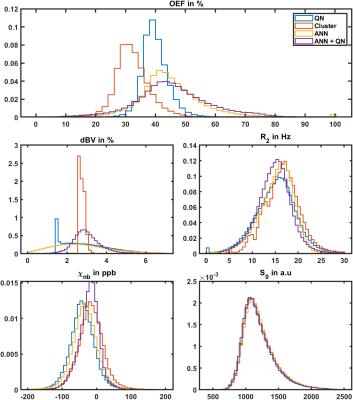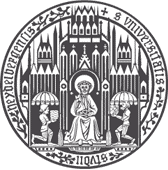Patrick Kinz1, Sebastian Thomas1, and Lothar R. Schad1
1Computer Assisted Clinical Medicine, Heidelberg University, Medical Faculty Mannheim, Mannheim, Germany
1Computer Assisted Clinical Medicine, Heidelberg University, Medical Faculty Mannheim, Mannheim, Germany
Combining an ANN with traditional quasi-Newton methods increases robustness an reduces noise of OEF mapping with QSM and qBOLD.

Fig.1: Representative axial slice of the reconstructed parameters: oxygen extraction fraction OEF, deoxygenated blood volume dBV, transverse relaxation rate R2, non-blood susceptibility χnb and magnitude after excitation S0. Reconstruction is based on combined QSM and qBOLD and done with four different approaches: a voxel wise quasi-Newton (QN) approach, QN initialized with the results from an initial fit on clusters of voxels with similar signal development (Cluster), an artificial neural network (ANN), and QN initialized with the results from the ANN (ANN+QN).

Fig.2: Normalized histograms of reconstructed parameters in gray matter (left) and white matter (right) of the same test subject as in figure 1. Parameters are oxygen extraction fraction OEF, deoxygenated blood volume dBV, transverse relaxation rate R2, non-blood susceptibility χnb and magnitude after excitation S0. Reconstruction approaches are: voxel wise quasi-Newton (QN), QN initialized with an initial fit on clusters of voxels with similar signal development (Cluster), an artificial neural network (ANN), and QN initialized with the results from the ANN (ANN+QN).
